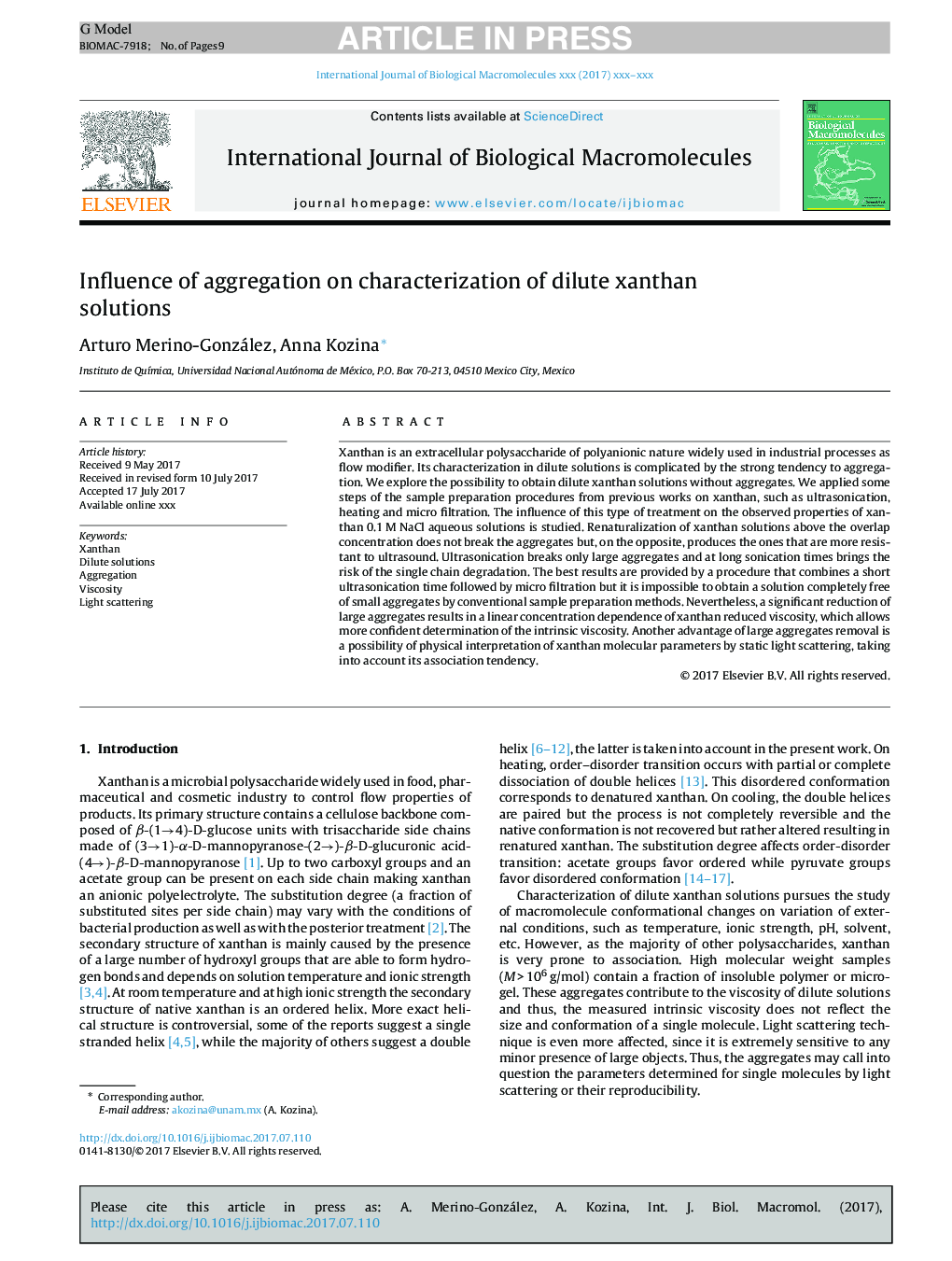| Article ID | Journal | Published Year | Pages | File Type |
|---|---|---|---|---|
| 8329637 | International Journal of Biological Macromolecules | 2017 | 9 Pages |
Abstract
Xanthan is an extracellular polysaccharide of polyanionic nature widely used in industrial processes as flow modifier. Its characterization in dilute solutions is complicated by the strong tendency to aggregation. We explore the possibility to obtain dilute xanthan solutions without aggregates. We applied some steps of the sample preparation procedures from previous works on xanthan, such as ultrasonication, heating and micro filtration. The influence of this type of treatment on the observed properties of xanthan 0.1Â M NaCl aqueous solutions is studied. Renaturalization of xanthan solutions above the overlap concentration does not break the aggregates but, on the opposite, produces the ones that are more resistant to ultrasound. Ultrasonication breaks only large aggregates and at long sonication times brings the risk of the single chain degradation. The best results are provided by a procedure that combines a short ultrasonication time followed by micro filtration but it is impossible to obtain a solution completely free of small aggregates by conventional sample preparation methods. Nevertheless, a significant reduction of large aggregates results in a linear concentration dependence of xanthan reduced viscosity, which allows more confident determination of the intrinsic viscosity. Another advantage of large aggregates removal is a possibility of physical interpretation of xanthan molecular parameters by static light scattering, taking into account its association tendency.
Related Topics
Life Sciences
Biochemistry, Genetics and Molecular Biology
Biochemistry
Authors
Arturo Merino-González, Anna Kozina,
